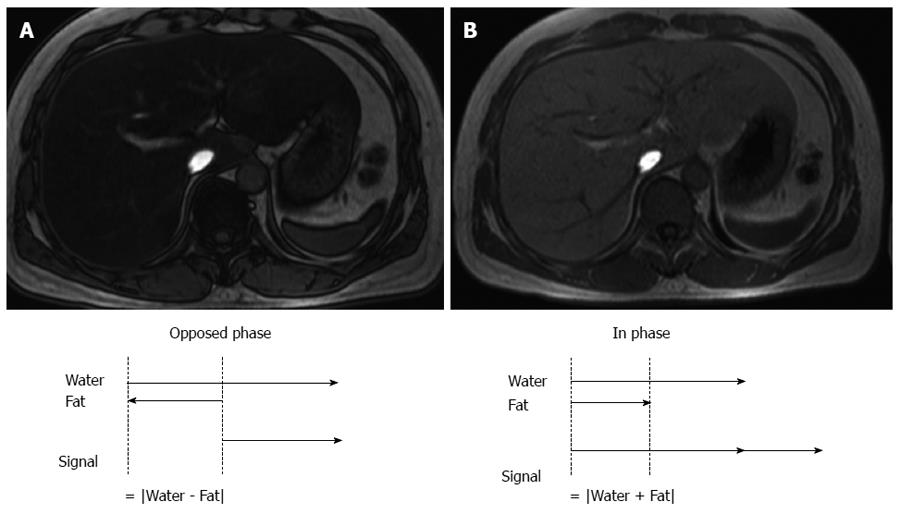Copyright
©2014 Baishideng Publishing Group Inc.
World J Gastroenterol. Jun 21, 2014; 20(23): 7392-7402
Published online Jun 21, 2014. doi: 10.3748/wjg.v20.i23.7392
Published online Jun 21, 2014. doi: 10.3748/wjg.v20.i23.7392
Figure 4 Dual-echo opposed-phase and in-phase chemical shift images of steatotic liver.
A: At opposed-phase (OP) (echo time = 2.3 ms at 1.5T), the protons in water and those in methylene (the largest fat moiety) are placed in opposite directions, so that the signals of these two components cancel each other. Therefore, the liver appears dark (i.e., decreased signal); B: At in-phase (IP), the protons in water and those in methylene are positioned in the same direction so that their signals are added. Liver fat fraction can be calculated based on signal intensities on OP and IP images as (signal at IP - signal at OP) ÷ 2 × signal on IP; the signal fat fraction calculated with dual-echo chemical shift images was not corrected for the T2* effect, and therefore may not accurately determine proton density fat fraction.
- Citation: Lee SS, Park SH. Radiologic evaluation of nonalcoholic fatty liver disease. World J Gastroenterol 2014; 20(23): 7392-7402
- URL: https://www.wjgnet.com/1007-9327/full/v20/i23/7392.htm
- DOI: https://dx.doi.org/10.3748/wjg.v20.i23.7392









